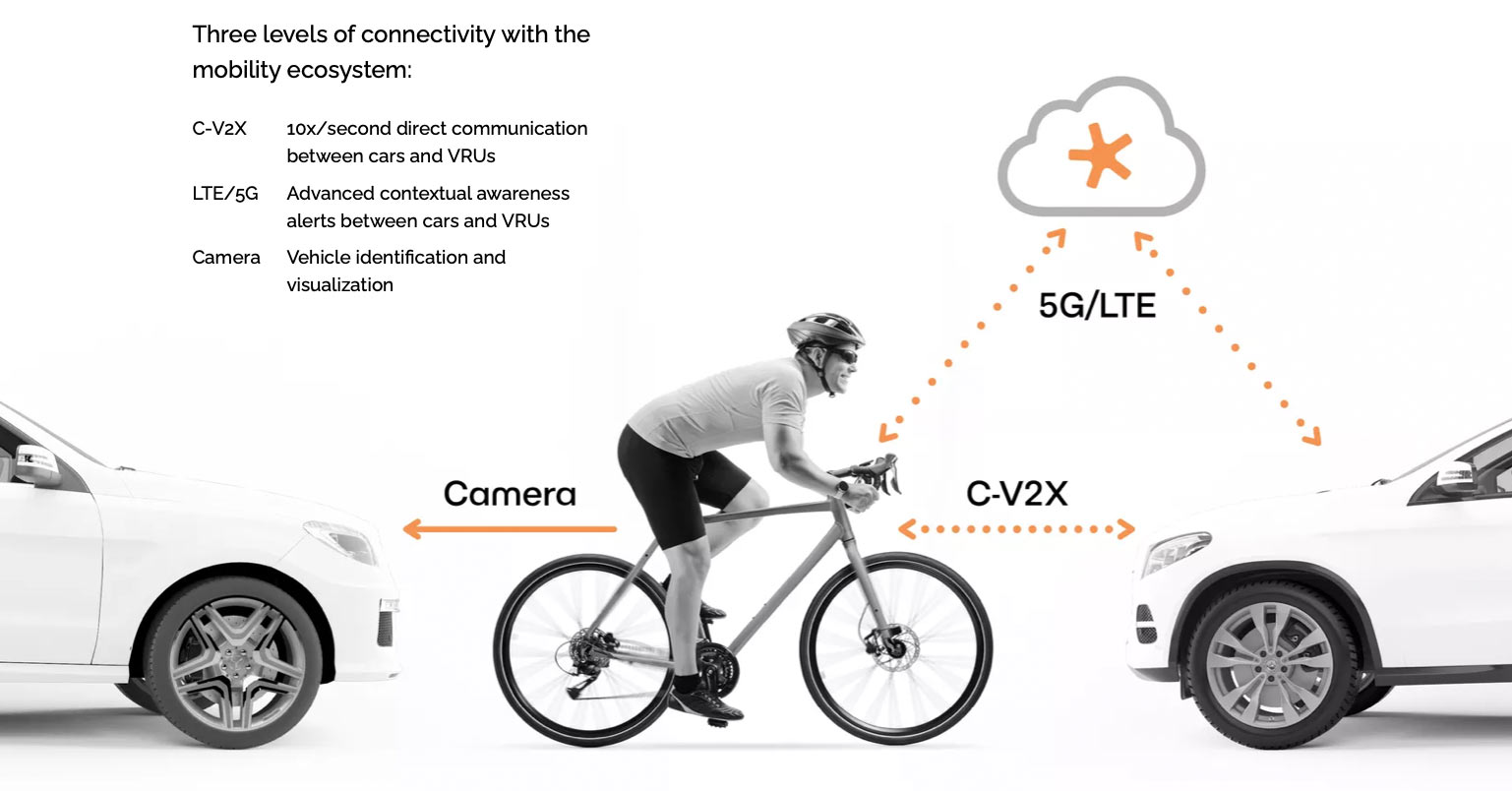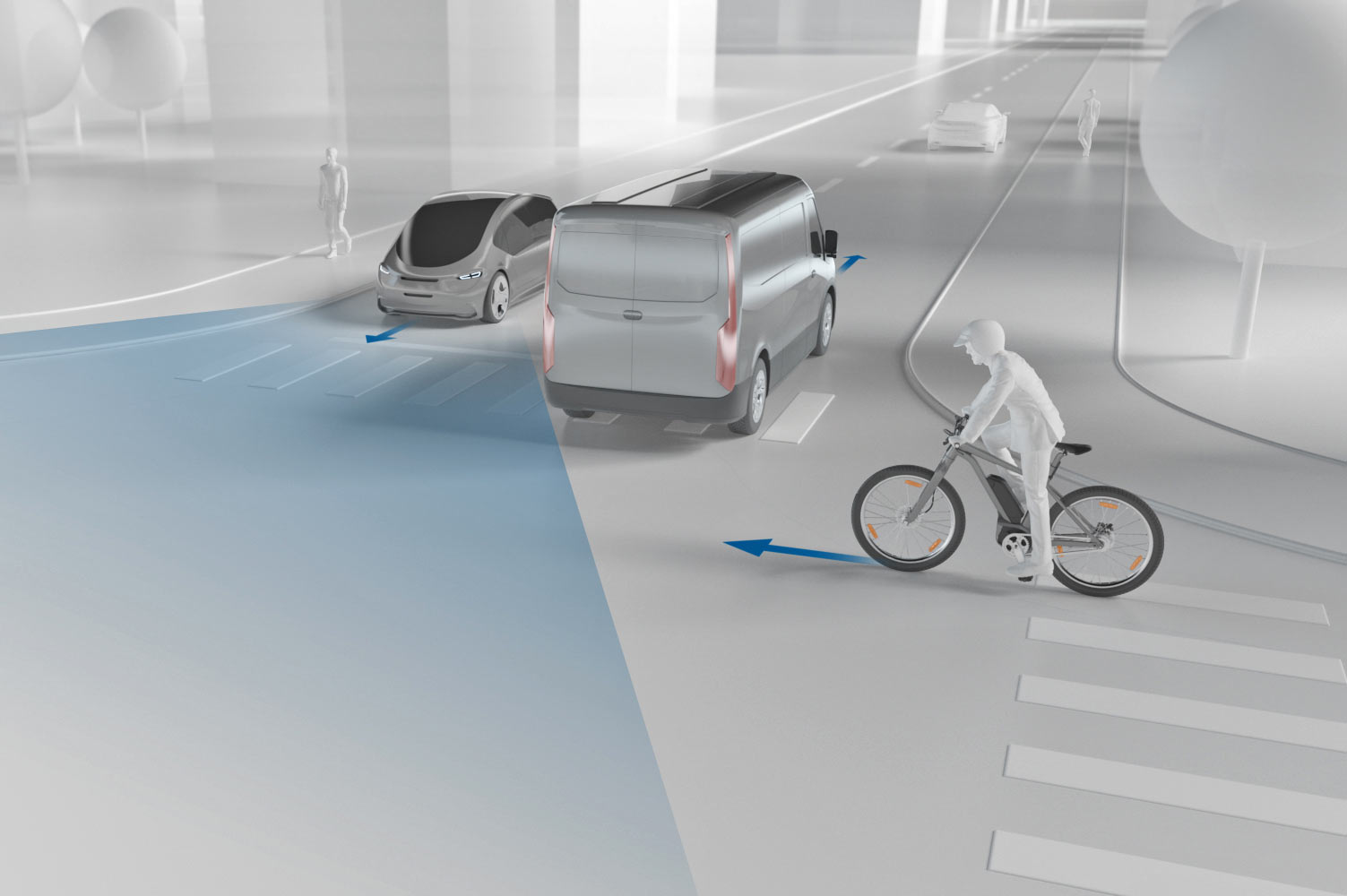We all know that cyclists are vulnerable out on the road amongst giant steel boxes being piloted by ever-less-attentive drivers, so a Coalition for Cyclist Safety is pushing for smarter V2X Vehicle-to-Everything Communication to make everyone on foot or two wheels safer. Surely, only relying on technology isn’t the only way to protect bicyclists on the road, nor is putting the responsibility on cyclists to carry some electronic device to communicate their presence in the roadway. But opening communication amongst all road users sounds like a good strategy to making vulnerable road users safer….
Coalition for Cyclist Safety strategy for V2X communication

“According to the U.S. Centers for Disease Control, bicycles constitute one percent of all trips across the United States, but represent two percent of all traffic fatalities. More than 130,000 cyclists a year suffer injuries riding bicycles in U.S. traffic.”
So, a collective of 19 leading companies in the auto, cycling & tech sectors are working together to try to “help reduce the risks facing cyclists and e-bike riders on North American roads“. This ‘Coalition for Cyclist Safety’ is strategizing how a smart V2X communication system can help improve the ‘digital visibility’ of cyclists and other ‘vulnerable road users’, at a time when more and more automobiles take advantage of electronic crash avoidance systems.

On the automotive side this North American coalition only includes Audi and the auto parts & accessories company Cariad. But hopefully, they’ll manage to get more onboard as the project develops. On the bike side, there’s an mix that leans heavily on the ebike side of things including: Accell (which includes Haibike, Winora, Ghost, Batavus, Koga, Lapierre, Raleigh & more), AT-Zweirad (aka Velo de Ville), BMC, Bosch eBike Systems, Gazelle, Shimano & Trek. The coalition is also actively inviting other companies to join in on the project. They can each out via email to: info@coalitionforcyclistsafety.org
An advisory committee overseeing the coalition includes key advocacy groups: ITS America, League of American Bicyclists, People for Bikes, and The Governors Highway Safety Association.
Bosch also specifically called out in their participation the need to “ensure that the bicycle and eBikes are also integrated in a future V2X ecosystem“.
Previous technology attempts to make cyclists safer

This is certainly not the first we’ve heard of V2X helping cyclists be seen. Trek & Ford were working on the topic almost 6 years ago now. As were several other brand-specific approaches from Volvo & POC, Jaguar & Rover, QUT, Trek & Specialized & more.

In fact, last year we reported on another active Spoke Safety C-V2X project. That one incorporated many of the same partners as this new coalition.
Where this all goes from here is still very much up in the air. But it still looks like cycling industry manufacturers will need to incorporate this new C-V2X tech into new bikes & ebikes. At the same time, they should make it available as an accessory for existing bikes via smart lights, cycling computers, or even compact devices that could be incorporated for example underneath a water bottle cage.
We’ll certainly be keeping our eyes peeled for any development in increased rider safety. Whether that is on ebikes or good old regular bicycles.
More information and the full PR from Bosch is available here. While the Coalition works on setting up their own website.
